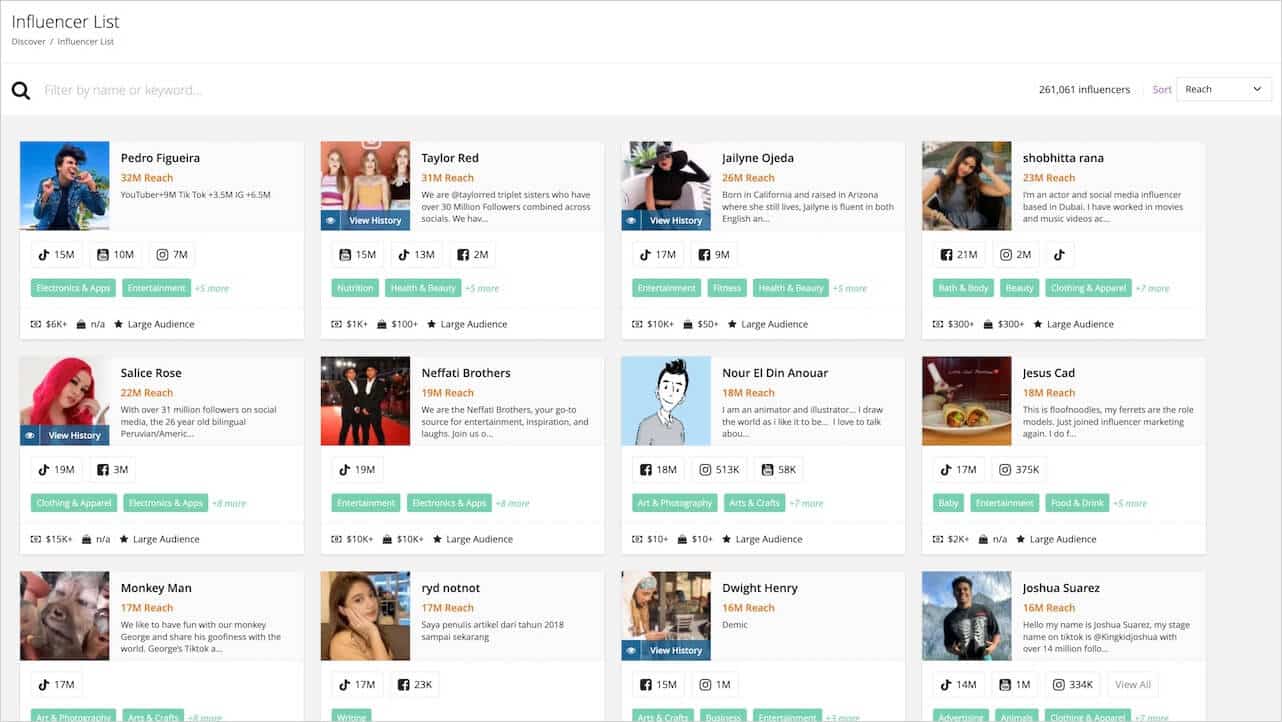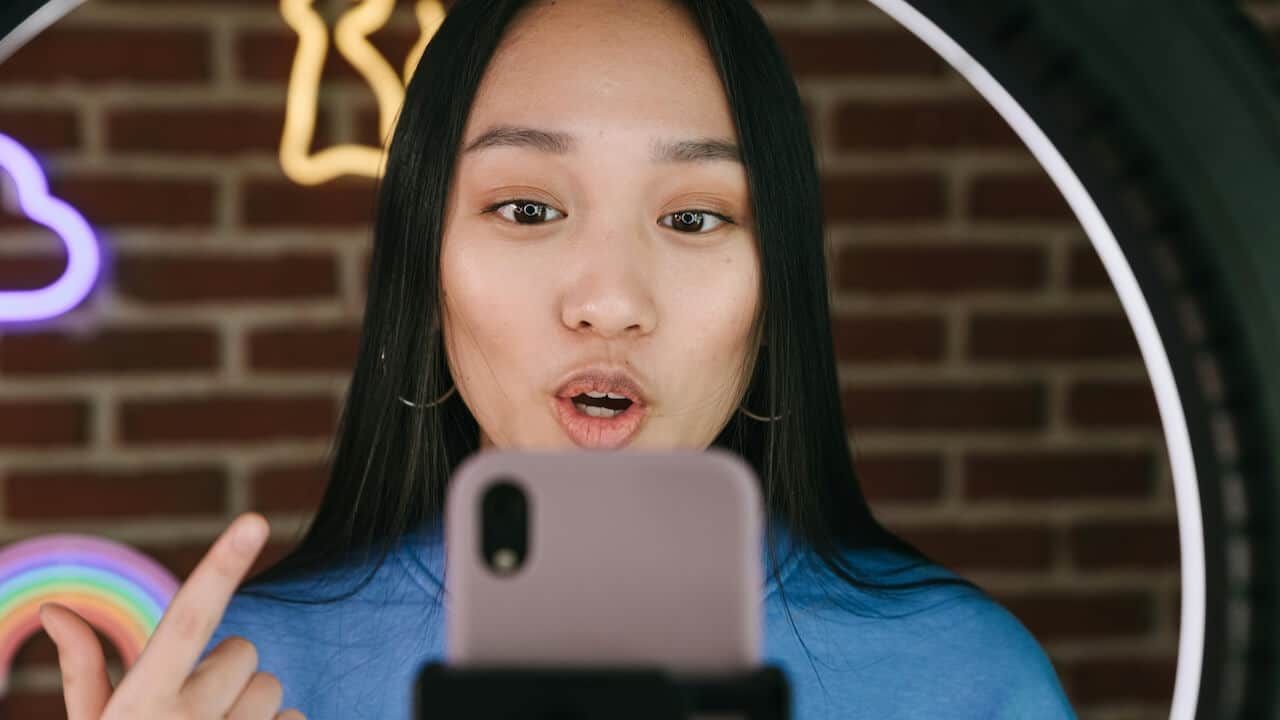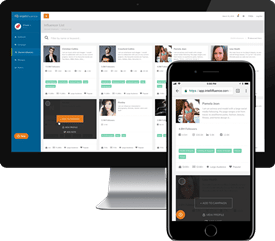One of the most important strategic decisions a brand must make is determining who to collaborate with. Should you partner with numerous micro- or peer-level influencers who have smaller but highly engaged audiences, or invest in a few macro-influencers with the power to reach millions? Both approaches can yield results—but understanding their differences, advantages, and trade-offs is key to crafting an effective influencer marketing strategy.
We’ll explore what defines a macro influencer, how they differ from smaller creators, the pros and cons of working with them, and a practical framework for deciding whether macro-influencer collaborations are right for your brand.
What Is a Macro Influencer?
Before diving into strategy, it’s important to define what is a macro influencer. A macro influencer typically refers to a creator with a large social following—generally between 100,000 and 1 million followers across one or more platforms. While there’s some variation in how platforms and agencies define the term, the key distinguishing factor is reach: macro influencers command a substantial audience that spans beyond niche communities.
This is a step up from micro-influencers, who usually have 10,000 to 100,000 followers, and peer-level influencers, sometimes called nano influencers, who typically have fewer than 10,000.

Featured Influencer: Salice Rose
With over 31 million followers on social media, the 26 year old bilingual Peruvian/American comedian influencer, Salice Rose, was born in Lancaster, California and has always held a strong ambition to make others smile which led her to be in front of the camera. In her own words, Salice expresses that she isn’t always aware if her followers are laughing with her or laughing at her but regardless as long as it keeps them smiling then that’s more than enough for her to keep on creating content.
While micro and peer-level influencers often focus on niche content and foster deep engagement within smaller circles, macro influencers occupy a middle ground between relatability and celebrity—they’re recognizable, influential, and capable of driving large-scale awareness.
The distinction between these influencer tiers isn’t just about follower numbers—it’s about marketing goals. Micro and peer-level influencers excel at generating authentic, community-driven engagement. Their followers often see them as trusted peers, which makes them ideal for product recommendations and conversion campaigns.
Macro influencers, on the other hand, deliver mass visibility. Their posts can generate millions of impressions and instantly place your brand in front of vast, diverse audiences. If your goal is to boost recognition, drive broad awareness, or align your brand with influential figures in your industry, macro influencers can be a powerful asset.
The Pros of Working With Macro Influencers
Massive Reach and Exposure: The most obvious benefit of collaborating with macro influencers is scale. With hundreds of thousands—or even millions—of followers, a single post can propel your message far beyond your current audience. For brands launching new products, entering new markets, or rebranding, this exposure is invaluable. It can drive a surge of visibility that smaller-scale influencer partnerships simply can’t match.
Professionalism and Experience: Macro influencers are typically seasoned content creators who understand how to deliver branded messages effectively. They know what works with their audience and are accustomed to meeting deadlines, negotiating contracts, and producing polished, high-quality content. This level of professionalism often translates to smoother collaborations and less hand-holding throughout the campaign.
Strong Brand Association: Partnering with a well-known macro influencer can elevate a brand’s image. Audiences tend to perceive collaborations with recognizable creators as a sign of legitimacy and prestige. In industries like fashion, beauty, or tech, where brand perception heavily influences purchasing decisions, this association can lead to lasting value beyond the initial campaign.
Cross-Platform Influence: Many macro influencers have built their followings across multiple platforms—Instagram, YouTube, TikTok, and even podcasts. This cross-platform presence allows brands to repurpose content and extend the impact of campaigns across various touchpoints, amplifying results.
The Cons and Considerations of Working With Macro Influencers
While macro influencers can deliver impressive reach, they also come with certain drawbacks and risks that brands should weigh carefully.
Higher Costs: Macro influencers command higher fees—often in the five-figure range or more per campaign, depending on their following and engagement rates. For smaller brands or startups, this can eat up a significant portion of the marketing budget. It’s essential to ensure that the influencer’s audience aligns with your target demographics and that the campaign has measurable ROI potential.
Lower Engagement Rates: As follower count increases, engagement rates tend to decrease. While a macro influencer’s post may reach hundreds of thousands, the percentage of followers who actively comment, share, or click through is often smaller compared to micro-influencers. Brands need to look beyond surface metrics like likes and focus on meaningful engagement, such as conversions or brand sentiment.
Fake Followers and Audience Authenticity: The larger the audience, the greater the risk of fake followers or inactive accounts. Even reputable macro influencers can have inflated follower counts due to bots or inactive users. Brands should always vet potential partners by using influencer analytics tools to check for suspicious growth patterns, low engagement-to-follower ratios, or mismatched audience demographics.
Credibility and Relatability: Because macro influencers operate at a higher level of visibility, they may be perceived as less relatable than smaller creators. Their audiences might see sponsored posts as more transactional, which can reduce perceived authenticity. Brands should prioritize influencers whose content naturally aligns with their values and products to maintain credibility.
Before committing to a collaboration, brands should analyze several data points to ensure a macro influencer is the right fit:
- Macro influencer follower count: Confirm the size of their audience and ensure it aligns with your reach goals.
- Engagement rate: Calculate likes + comments ÷ followers × 100 to assess audience activity.
- Audience demographics: Review age, location, and interests to ensure alignment with your target market.
- Authenticity check: Vet the influencer by reviewing their recent posts and engagement. Some services advertise the ability to detect fake followers and engagement, but the tried-and-true method is manual research. Intellifluence enables you to review each influencer’s social profiles before sending them a pitch.
- Content quality and tone: Evaluate whether their style, voice, and values reflect your brand identity.
By combining quantitative and qualitative analysis, brands can identify creators who not only have reach—but also relevance.
Building a Decision Framework
Choosing between macro and micro influencers doesn’t have to be an either-or decision. The right approach depends on your goals, budget, and campaign timeline. Here’s a simple framework brands can use to guide that choice:
1. Define Your Campaign Objective
Awareness & Reach: Choose macro influencers. They can generate buzz quickly and introduce your brand to new audiences.
Engagement & Conversion: Opt for micro or peer-level influencers, who excel at building trust and inspiring action.
2. Evaluate Budget and ROI
If you have a large marketing budget and want to make a splash, investing in a few macro influencers can deliver high visibility.
If resources are limited, spreading your budget across multiple micro-influencers can yield more consistent engagement and a higher combined ROI.
3. Consider Your Target Audience
If your product appeals to a broad demographic, macro influencers are ideal.
For niche markets—like eco-conscious consumers or gaming enthusiasts—micro influencers often deliver better alignment and authenticity.
4. Assess Long-Term Goals
For brand positioning and reputation building, macro influencers can be valuable ambassadors.
For sustained engagement, ongoing collaborations with smaller influencers often create more durable brand relationships.
In many cases, a hybrid approach works best. Brands can pair a few macro influencers for top-of-funnel awareness with a network of micro-influencers who reinforce the message through authentic engagement. This layered strategy combines reach with credibility.
Working with macro influencers can be one of the most effective ways to boost brand awareness, but success depends on thoughtful planning and strategic execution. The first step is to prioritize alignment over popularity. While follower count is important, it should never be the sole deciding factor. Brands should look for influencers whose content style, tone, and audience values naturally align with their own. This ensures that any collaboration feels authentic rather than forced, which in turn strengthens the credibility of both the influencer and the brand.

Next, it’s essential to set clear expectations and deliverables from the beginning. Macro influencers are professionals who appreciate structure, so brands should provide a detailed campaign brief that outlines key messaging points, creative guidelines, deliverable formats, timelines, and performance goals. This helps both sides stay aligned and reduces the risk of miscommunication once the campaign is underway.
When it comes to compensation, brands should negotiate fair and transparent terms that reflect the influencer’s reach, expertise, and production value. These creators often dedicate significant time and resources to their content, so payment should account for their influence while also incorporating performance incentives where appropriate. Clear agreements help foster mutual respect and ensure that both parties are invested in achieving strong results.
It’s equally important to leverage analytics and track results to measure the true impact of the collaboration. Tools such as UTM links, affiliate codes, and platform analytics can help brands monitor reach, engagement, conversions, and sentiment. By analyzing this data, brands can assess ROI and refine future influencer partnerships based on what performs best.
Finally, the most successful collaborations are built on relationships, not transactions. Instead of treating macro influencers as one-off marketing tools, brands should view them as long-term partners who can evolve with the company’s goals. Maintaining open communication, providing creative freedom, and showing appreciation for their contributions can lead to more authentic content and stronger, ongoing partnerships. When brands invest in these relationships, they not only gain exposure but also cultivate genuine advocates who believe in—and consistently champion—the brand.
So, What Should You Do?
Macro influencers offer brands an unparalleled opportunity to amplify visibility and associate with influential voices. Their vast audiences, polished content, and professional approach can elevate a brand’s reputation and reach new markets at scale. However, they also come with higher costs, lower engagement rates, and potential authenticity challenges.
By understanding the benefits of macro influencers, evaluating follower count and engagement metrics, and using a clear decision framework, brands can determine whether to invest in a few high-reach collaborations or diversify across a broader base of micro-influencers.
Regardless of the influencer tier you are focused on, Intellifluence provides an all-in-one platform that simplifies the entire process. Instead of spending time manually searching for creators, you can access a vast network of influencers across every major social media channel, complete with transparent follower counts, engagement data, and audience insights. This makes it easy to identify the candidates whose values and followers align with your target market.
Beyond discovery, Intellifluence streamlines campaign management. Brands can message influencers directly, send pitches, track deliverables, and measure performance with ease—ensuring efficient, organized collaborations. Whether your goal is to partner with a few macro influencers for broad awareness or coordinate dozens of micro influencers for targeted engagement, Intellifluence offers the flexibility and analytics tools to scale your strategy effectively.
Ultimately, the most effective influencer marketing strategies balance reach, authenticity, and alignment. Whether your brand chooses to work with macro influencers, micro influencers, or both, success depends on forging genuine connections that resonate with real audiences. When executed thoughtfully, these collaborations can do far more than drive sales—they can shape how the world sees your brand.

SallyBot is committed to helping users get the most out of Intellifluence. By helping brands create campaigns, providing unparalleled customer service and offering useful advice, nothing makes SallyBot happier than hearing she is liked… Really, really liked.






